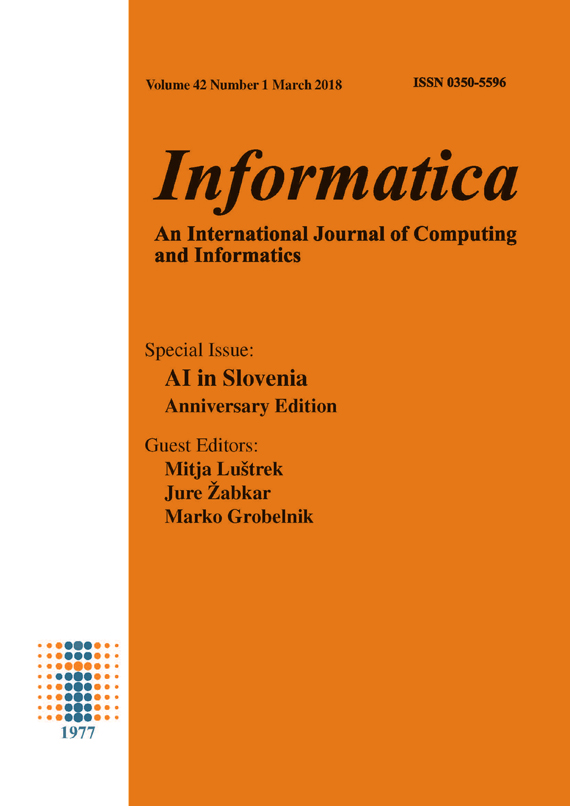Prediction of Sentiment from Macaronic Reviews
Abstract
Language used by people in the online content has not any proper format. For their own convenience, they also use some native language words while writing anything online i.e. reviews, blogs, etc. The presence of native words along with base language is known as macaronic language. The use of macaronic languages is on the rise these days. It also facilitates the need of expert analysers for the processing of such content to take effective decisions. The performance of various decision support systems is dependable over these analysers. Therefore, in this paper, an algorithm is developed which is a hybridised algorithm which first normalize the content to its base language later sentiment analysis is performed over it. The experimental results using proposed algorithm indicates a trade-off between various performance aspects.ComputerReferences
B. Danet and S. C. Herring, "Introduction: The multilingual internet," Journal of Computerâ€Mediated Communication, vol. 9, pp. 0-0, 2003.
J. Derkacz, M. a. Leszczuk, M. Grega, A. Koźbiał, and K. Smaïli, "Definition of Requirements for Accessing Multilingual Information and Opinions," in Multimedia and Network Information Systems: Springer, pp. 273-282.
A. Kaur and V. Gupta, "Proposed Algorithm of Sentiment Analysis for Punjabi Text," Journal of Emerging Technologies in Web Intelligence, vol. 6, pp. 180-183, 2014.
A. Das and S. Bandyopadhyay, "SentiWordNet for Bangla," Knowledge Sharing Event-4: Task, vol. 2, 2010.
A. Das and S. Bandyopadhyay, "Opinion-Polarity Identification in Bengali," in International Conference on Computer Processing of Oriental Languages, 2010, pp. 169-182.
A. Das and S. Bandyopadhyay, "Theme detection an exploration of opinion subjectivity," in Affective Computing and Intelligent Interaction and Workshops, 2009. ACII 2009. 3rd International Conference on, 2009, pp. 1-6.
A. Das and S. Bandyopadhyay, "SentiWordNet for Indian languages," Asian Federation for Natural Language Processing, China, pp. 56-63, 2010.
A. Joshi, A. Balamurali, and P. Bhattacharyya, "A fall-back strategy for sentiment analysis in hindi: a case study," Proceedings of the 8th ICON, 2010.
A. Bakliwal, P. Arora, and V. Varma, "Hindi subjective lexicon: A lexical resource for hindi polarity classification," in Proceedings of the Eight International Conference on Language Resources and Evaluation (LREC), 2012.
D. Das and S. Bandyopadhyay, "Labeling emotion in Bengali blog corpus–a fine grained tagging at sentence level," in Proceedings of the 8th Workshop on Asian Language Resources, 2010, p. 47.
R. Sharma, S. Nigam, and R. Jain, "Polarity detection movie reviews in hindi language," arXiv preprint arXiv:1409.3942, 2014.
P. Arora and B. Kaur, "Sentiment Analysis of Political Reviews in Punjabi Language," International Journal of Computer Applications, vol. 126, 2015.
R. Sharma and P. Bhattacharyya, "A Sentiment Analyzer for Hindi Using Hindi Senti Lexicon."
P. Pandey and S. Govilkar, "A Framework for Sentiment Analysis in Hindi using HSWN," International Journal of Computer Applications, vol. 119, 2015.
K. Denecke, "Using sentiwordnet for multilingual sentiment analysis," in Data Engineering Workshop, 2008. ICDEW 2008. IEEE 24th International Conference on, 2008, pp. 507-512.
C. Banea, R. Mihalcea, J. Wiebe, and S. Hassan, "Multilingual subjectivity analysis using machine translation," in Proceedings of the Conference on Empirical Methods in Natural Language Processing, 2008, pp. 127-135.
Y.-T. Seih, S. Beier, and J. W. Pennebaker, "Development and Examination of the Linguistic Category Model in a Computerized Text Analysis Method," Journal of Language and Social Psychology, pp.1-13,2016
M. Kothapalli, E. Sharifahmadian, and L. Shih, "Data Mining of Social Media for Analysis of Product Review," International Journal of Computer Applications, vol. 156.
D. Q. Nguyen, D. Q. Nguyen, D. D. Pham, and S. B. Pham, "A robust transformation-based learning approach using ripple down rules for part-of-speech tagging," AI Communications, vol. 29, pp. 409-422.
H. Bunt, V. Petukhova, D. Traum, and J. Alexandersson, "Dialogue Act Annotation with the ISO 24617-2 Standard," in Multimodal Interaction with W3C Standards: Springer, 2016, pp. 109-135.
Downloads
Published
Issue
Section
License
I assign to Informatica, An International Journal of Computing and Informatics ("Journal") the copyright in the manuscript identified above and any additional material (figures, tables, illustrations, software or other information intended for publication) submitted as part of or as a supplement to the manuscript ("Paper") in all forms and media throughout the world, in all languages, for the full term of copyright, effective when and if the article is accepted for publication. This transfer includes the right to reproduce and/or to distribute the Paper to other journals or digital libraries in electronic and online forms and systems.
I understand that I retain the rights to use the pre-prints, off-prints, accepted manuscript and published journal Paper for personal use, scholarly purposes and internal institutional use.
In certain cases, I can ask for retaining the publishing rights of the Paper. The Journal can permit or deny the request for publishing rights, to which I fully agree.
I declare that the submitted Paper is original, has been written by the stated authors and has not been published elsewhere nor is currently being considered for publication by any other journal and will not be submitted for such review while under review by this Journal. The Paper contains no material that violates proprietary rights of any other person or entity. I have obtained written permission from copyright owners for any excerpts from copyrighted works that are included and have credited the sources in my article. I have informed the co-author(s) of the terms of this publishing agreement.
Copyright © Slovenian Society Informatika








